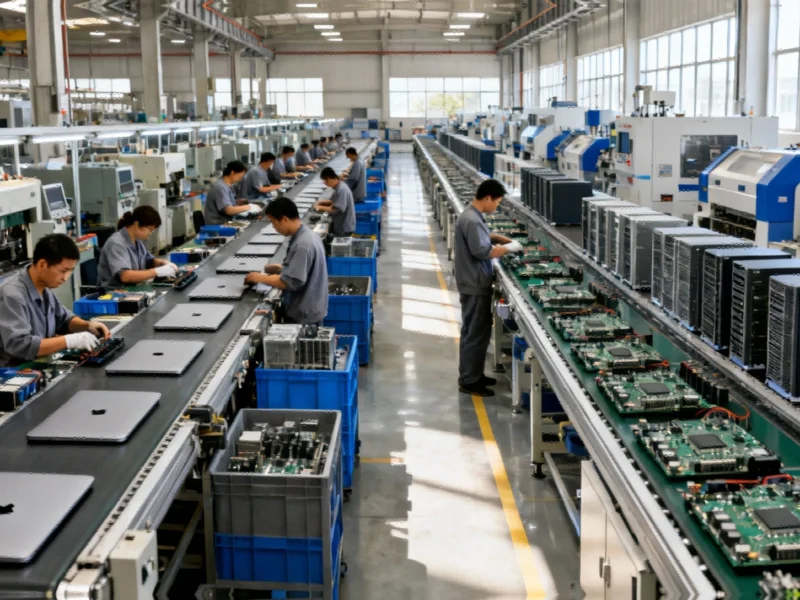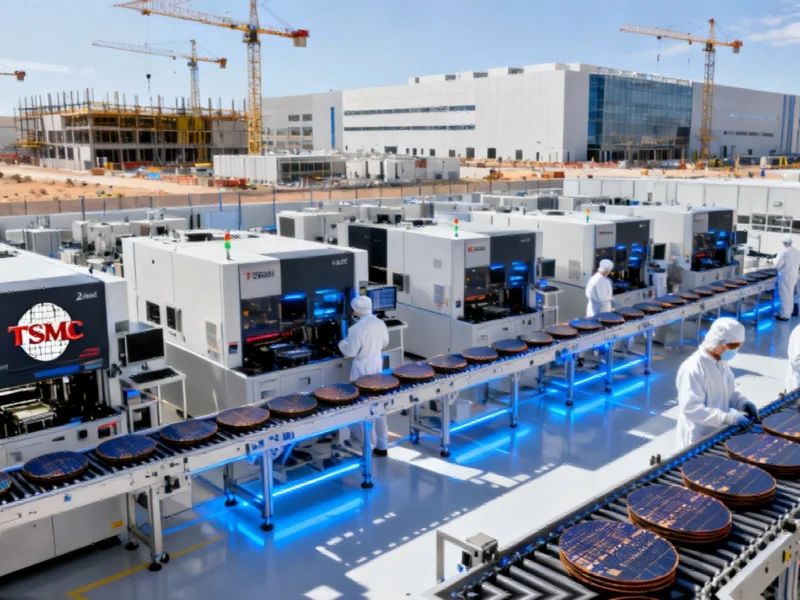Taiwan Semiconductor Manufacturing Company is dramatically speeding up deployment of cutting-edge semiconductor manufacturing technologies at its American facilities, responding to surging artificial intelligence demand and potential competitive threats from domestic players like Intel. CEO C.C. Wei’s announcement during the company’s third-quarter earnings call signals a strategic shift in how quickly advanced nodes will reach US soil.
Accelerated American Ambitions
The world’s leading foundry is preparing to “upgrade our technologies faster … to more advanced process technologies in Arizona,” Wei stated, pointing to “strong AI-related demand from our customers” as the primary driver. This acceleration comes as TSMC’s advanced chip technology deployment timeline undergoes significant compression, potentially bringing next-generation processes to American fabs years ahead of schedule.
Currently, TSMC’s Fab 21 in Arizona produces chips using the N4 (4-nanometer) process technology, serving major clients including Apple and Nvidia. The facility began volume production earlier this year, marking TSMC’s first major manufacturing footprint on US soil. The company’s original roadmap called for bringing its N3 node to the second Arizona fab in 2028, with more advanced technologies not expected until the end of the decade.
AI Demand Driving Strategic Shift
The acceleration appears directly tied to unprecedented demand for AI processors and related components. Major technology companies are scrambling to secure manufacturing capacity for AI chips, with Apple, Nvidia, and AMD all producing or planning to produce components at TSMC’s first Arizona facility. This demand surge has been amplified by persistent concerns about tariffs on foreign-made electronics and semiconductors, making domestic production increasingly attractive.
The AI ecosystem’s rapid evolution is creating ripple effects across the technology landscape. As Apple’s AI ecosystem evolves with privacy-first approaches, the need for advanced manufacturing capabilities closer to key markets becomes increasingly critical for maintaining competitive advantages.
Intel Factor in Technology Race
Another significant consideration in TSMC’s accelerated timeline may be the competitive landscape. Intel’s upcoming 18A process technology, representing a 2-nanometer class manufacturing node, could begin production in the United States before TSMC’s most advanced American offerings. The x86 giant’s Panther Lake and Clearwater Forest Xeon processors will utilize this technology, potentially creating a domestic alternative for American chip designers.
Intel’s 18A process incorporates several innovative features not yet available in TSMC’s nodes, including backside power delivery technology that promises substantial transistor density improvements. While Intel’s foundry business has yet to secure major external customers for its most advanced nodes, the mere availability of cutting-edge domestic manufacturing could influence customer decisions.
Manufacturing and Security Considerations
TSMC’s strategic shift occurs against a backdrop of increasing focus on supply chain security and technological sovereignty. Recent incidents, including the nation-state cyberattack targeting F5 Networks, highlight the vulnerabilities in global technology infrastructure and the importance of securing critical manufacturing capabilities.
The geopolitical dimension of semiconductor manufacturing has become increasingly prominent, with governments worldwide implementing policies to encourage domestic chip production. This trend is reflected in initiatives beyond semiconductors, such as Brazil’s push to quadruple global biofuel usage, demonstrating how technology and energy security concerns are driving policy decisions across multiple sectors.
Technology Migration Uncertainties
While CEO Wei confirmed the accelerated timeline, he declined to specify whether TSMC’s second Arizona fab would skip the N3 node entirely and jump directly to N2 or the yet-unreleased A16 process. This uncertainty leaves open questions about how quickly the most advanced manufacturing technologies will actually become available to American customers.
The computing landscape continues to diversify beyond traditional paradigms, with some companies exploring alternative computing platforms for Windows 10 users as technology transitions accelerate across multiple domains.
Broader Industry Implications
TSMC’s decision to accelerate its US technology roadmap reflects broader shifts in the global semiconductor industry. As countries compete for technological leadership, manufacturing location decisions are increasingly influenced by strategic considerations alongside traditional economic factors. These dynamics are playing out globally, with government officials engaging in diplomatic efforts to secure technological partnerships that extend beyond单纯的commercial relationships.
The accelerated timeline could significantly impact the competitive balance in advanced semiconductor manufacturing, potentially giving American technology companies earlier access to cutting-edge processes while reducing dependence on Asian manufacturing during periods of geopolitical tension.
TSMC’s revised US strategy represents one of the most significant developments in global semiconductor manufacturing in recent years, potentially reshaping supply chains and competitive dynamics as the AI revolution continues to accelerate demand for advanced computing capabilities.
Based on reporting by {‘uri’: ‘theregister.com’, ‘dataType’: ‘news’, ‘title’: ‘TheRegister.com’, ‘description’: ”, ‘location’: {‘type’: ‘country’, ‘geoNamesId’: ‘6252001’, ‘label’: {‘eng’: ‘United States’}, ‘population’: 310232863, ‘lat’: 39.76, ‘long’: -98.5, ‘area’: 9629091, ‘continent’: ‘Noth America’}, ‘locationValidated’: False, ‘ranking’: {‘importanceRank’: 277869, ‘alexaGlobalRank’: 21435, ‘alexaCountryRank’: 7017}}. This article aggregates information from publicly available sources. All trademarks and copyrights belong to their respective owners.



